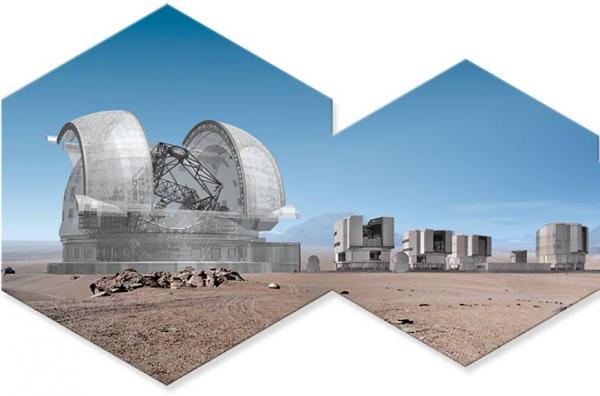The European Southern Observatory (ESO) Council at its meeting at ESO's Headquarters in Garching, Germany on 4 December 2012 has given full approval for the start of the European Extremely Large Telescope (E-ELT) programme. With its 39,3 m diametre mirror, E-ELT will be the world largest ground-based telescope for visible and infrared observations. Four to five times bigger that the present most-advanced instruments, it will collect 15 times more light. Its size is also larger than the other competing installations the « Thirty-Meter Telescope » and the « Giant Magellan Telescope ». The vote of France has allowed to reach the two-third majority needed for the launch of the program. Within a consortium of other European laboratories, the CEA (Astrophysical Division - IRFU) is involved in the buiding of METIS, a spectro-imager operating in the infrared that will be one of the major instruments at the focus of the new giant telescope.
Read more in : Le télescope européen géant E-ELT définitivement accepté (in French)
CEA is part of an European consortium (Netherlands-Germany-Austria-France-United Kingdom, Switzerland) and will participate to the building of the 3rd instrument that will be at the E-ELT focus, the spectro-imager METIS (for Mid-infrared E-ELT Imager and Spectrograph). This imager is directly derived from other infrared instruments already provided by CEA as the VISIR camera at the focus of the VLT (Very Large Telescope) or the MIRI instrument that will be on-board the next JWST (James Webb spatial Telescope). METIS will allow to observe at high angular resolution in the mid-infrared domain, covering the wavelength range from 3 to 13 microns. The METIS final approval is expected in 2013 for a delivery in the early 2020's. CEA-Irfu will be in charge of the control and calibration of the high performance infrared detectors as well as the complete testing of their performance.
Contact : Pierre-Olivier LAGAGE and Eric PANTIN
see also : - MIRI : une caméra infrarouge à bord du JWST (in French)
- MIRI en route vers la NASA (9 mai 2012) (in French)
- VISIR : une caméra-spectromètre infrarouge pour le VLT (in French)
voir aussi la video : Masque d'étoile - coronographe de la caméra MIRI du JWST (2 Mars 2010)
Rédaction: J.M. Bonnet-Bidaud





